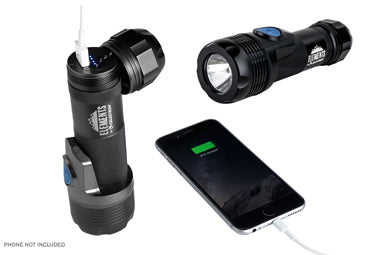Summer of the Planets: A Guide to Celestron’s Planetary Imaging Cameras
July 13, 2018

With Jupiter, Saturn, Venus, and Mars all parading across the night sky, there’s never been a better time to dive into planetary imaging than the summer of 2018. But with so many exciting targets to capture, you’ll want to choose the right planetary imager for you. We put together this guide to walk you through the selection process.
Factors to Consider
The good news is that any computerized telescope that accepts 1.25” eyepieces can be used with a Celestron planetary camera. Beginners may think that you need an “entry-level” camera to start imaging, but fortunately, that’s not the case. The learning curve for image capture and processing is virtually the same for advanced and entry-level cameras. Feel free to choose the one that meets your needs now and for years to come.
So, what factors should you keep in mind when choosing a camera?
-
Pixel size
Unlike wide open star clusters and nebulae, the planets are notoriously small in the night sky. When viewed through short focal length telescopes, the image scale can be quite small. To capture fine details, you need pixels that are very small and tightly packed on the sensor.
But when you have a longer focal length telescope, the image scale is much larger. You can get away with using a larger, more sensitive pixel that will reveal more detail. -
Frame rate
Atmospheric turbulence can cause the planets to appear fuzzy or blurry. A faster frame rate combats poor seeing conditions by “freezing” the view, capturing split seconds of stable air when the image comes in clear.
Your telescope’s focal length
Not all cameras are a good match for all telescopes. To determine your telescope’s focal length, look for a nameplate on the optical tube, a ring around the corrector lens on catadioptric telescopes, or consult the manual or website.
| Short to Moderate Focal Lengths (300mm to 1000mm) | |
|---|---|
 |
NexImage 10MP (93708) - Perfect for shorter to moderate focal lengths, the small (1.67 micron), densely-packed pixels give good image scale in smaller telescopes. A USB 3.0 connection allows NexImage 10 to shoot up to 200 frames per second (fps) at smaller resolutions. This camera is our pick for the best of the budget-friendly cameras. |
| Moderate to Long Focal Lengths (1000mm and up) | |
 |
NexImage Burst (95518) - A good choice with relatively small pixels but a fast frame rate (30-120 fps) to help freeze seeing. The best camera for the price. |
 |
NexImage 5MP (93711) - Some imagers have gotten good results with this camera under excellent seeing conditions, but it’s not our top pick. NexImage 5 features a large sensor with small pixels, but its USB 2.0 means it has a slower frame rate. That means you’ll be collecting a smaller number of frames over a given amount of time compared to the other cameras. |
| Long Focal Lengths (2000mm and up) | |
 |
Skyris 132C (95508) - This is the camera preferred by world renowned planetary imager Christopher Go. It’s a great camera for the more demanding imager using scopes with long focal lengths. The 3.7-micron pixels are sensitive to the near infrared, which is advantageous to the planetary imager. It uses USB 3.0 and offers 60 to 200+ fps to freeze seeing and maximize the number of frames you can capture in a short time. These items are discontinued, but may be available secondhand or through a third party. |
| All Focal Lengths | |
 |
Skyris 236C (95506) - This is the best overall single-shot color planetary camera we offer. The 2.8-micron pixels offer enough resolution to perform well for a variety of focal lengths, from relatively short to longer. Like the Skyris 132C, it’s sensitive to the near infrared, uses USB 3.0, and offers frame rates from 60 to 200+ fps. These items are discontinued, but may be available secondhand or through a third party. |
 |
Skyris 236M (95507) - This one is for the serious astroimager. The fact that this is a monochrome version of the Skyris 236C means that it uses all the pixels on the sensor to capture the luminance of the image, giving it higher resolution compared to the color sensor. This is the best choice for all telescope focal lengths. The one downfall is that you will have a monochrome image unless you use the optional Skyris filter wheel, LRGB filters, and plan to do a lot of post-processing to get that one great shot. These items are discontinued, but may be available secondhand or through a third party. |

























